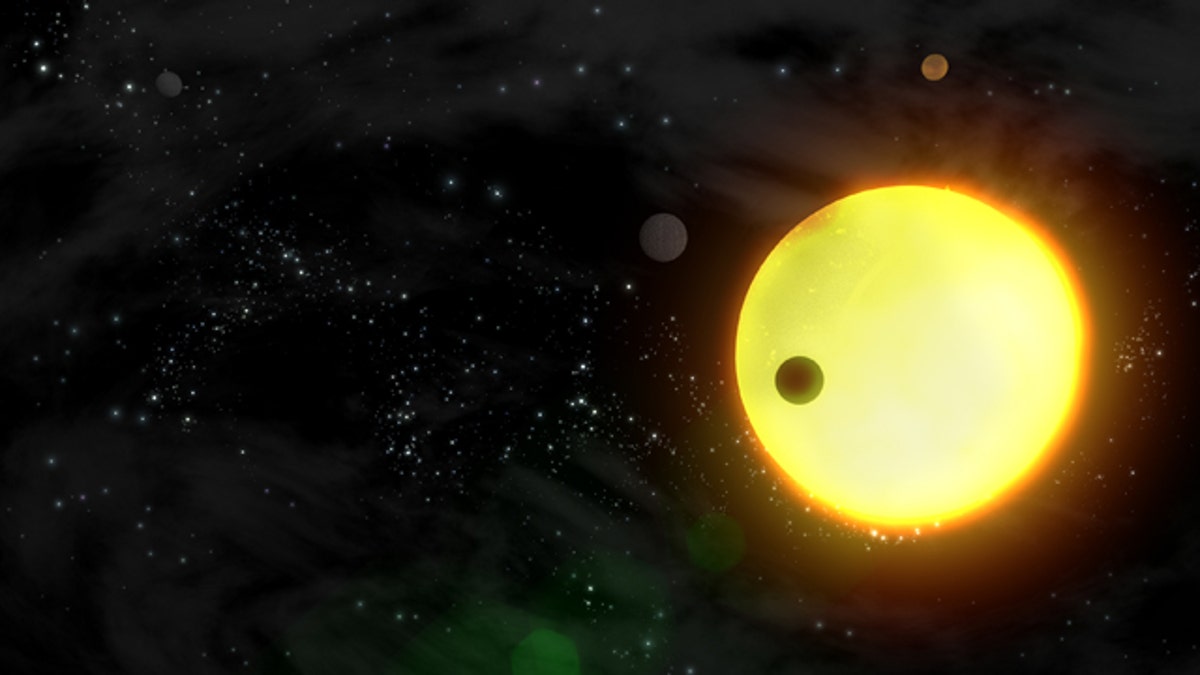
An artist's impression of an exoplanet orbiting a star. (ESA / AOES Medialab)
A newly discovered gas giant planet may have an interior that closely resembles those of Jupiter and Saturn in our own Solar System, and may hold water, the building block of life.
The newly found Corot-9b is one of a class of heavenly bodies called exoplanets -- planets like Earth and Saturn that are discovered outside of our solar systems. More than 400 have been found so far, and of the billions of stars in the sky, many are likely to have planets.
But finding them and picking those most like our own Earth is a challenge. Very few planets are temperate enough to allow the presence of liquid water, but the newly discovered Corot-9b is one of them. It was found on 16 May 2008 and orbits its star every 95.274 days, a little longer than Mercury takes to go round the Sun.
Because it orbits a star cooler than our Sun, Corot-9b's temperature could lie somewhere between -23°C and 157°C.
Scienists are applauding the discovery, calling it the first exoplanet that really resembles the familiar planets in our solar system. "Corot-9b is the first exoplanet that is definitely similar to a planet in our Solar System," says Hans Deeg, a researcher at the Instituto de Astrofísica de Canarias, whose paper on the discovery is published today in Nature.
The similarity is caused by the fact that Corot-9b is sufficiently far from its star to prevent tidal forces from heating its interior. Tidal forces are created by the strength of gravity weakening from the front to back of the celestial body. When the difference between the near side and the far side is great, the tidal force can prevent the planet from spinning quickly, forcing it to only show one face to the star. It can also provide heat to the interior of the planet, changing its physical condition.
Based on calculations, neither of these is possible in this case. "Although we don't know, because we can't see the planet directly, there is reason to believe that this planet has a normal day-night cycle," says Malcolm Fridlund, ESA Project Scientist for Corot. It means that lacking a tidal heat source, Corot-9b's interior is likely to have remained similar to the gas giants in our Solar System.
There's one other tantalizing possibility: Although the planet itself is a gas giant and hence has no solid surface to stand on, what if it possessed a moon like Saturn's Titan? If the temperature were towards the lower end of the estimated range, then any moon would be an ice ball. If it were towards the upper end, it would be rather too hot for liquid water. But what if it were somewhere in the middle ... ?
